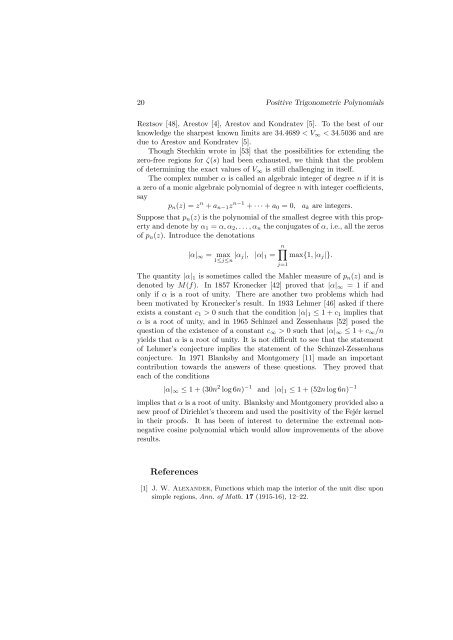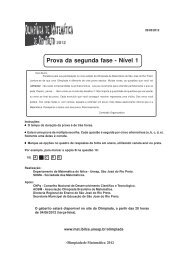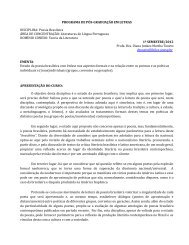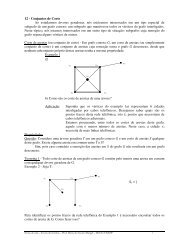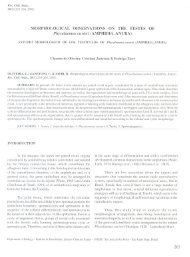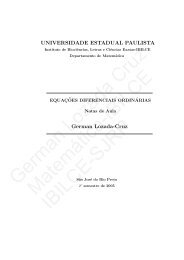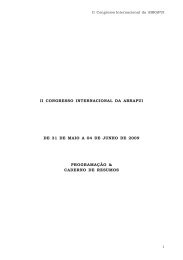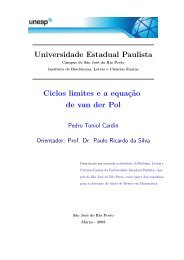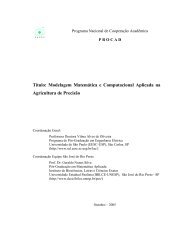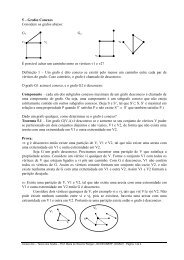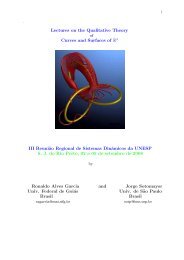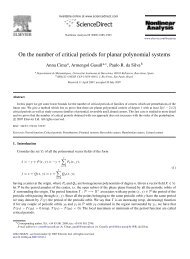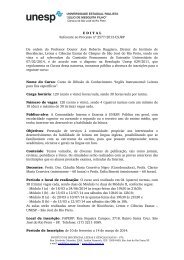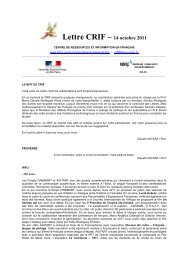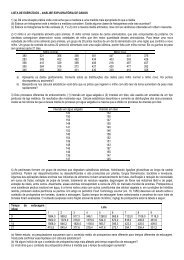Extremal Positive Trigonometric Polynomials - CiteSeerX
Extremal Positive Trigonometric Polynomials - CiteSeerX
Extremal Positive Trigonometric Polynomials - CiteSeerX
Create successful ePaper yourself
Turn your PDF publications into a flip-book with our unique Google optimized e-Paper software.
20 <strong>Positive</strong> <strong>Trigonometric</strong> <strong>Polynomials</strong><br />
Reztsov [48], Arestov [4], Arestov and Kondratev [5]. To the best of our<br />
knowledge the sharpest known limits are 34.4689 < V ∞ < 34.5036 and are<br />
due to Arestov and Kondratev [5].<br />
Though Stechkin wrote in [53] that the possibilities for extending the<br />
zero-free regions for ζ(s) had been exhausted, we think that the problem<br />
of determining the exact values of V ∞ is still challenging in itself.<br />
The complex number α is called an algebraic integer of degree n if it is<br />
a zero of a monic algebraic polynomial of degree n with integer coefficients,<br />
say<br />
p n (z) = z n + a n−1 z n−1 + · · · + a 0 = 0, a k are integers.<br />
Suppose that p n (z) is the polynomial of the smallest degree with this property<br />
and denote by α 1 = α, α 2 , . . . , α n the conjugates of α, i.e., all the zeros<br />
of p n (z). Introduce the denotations<br />
|α| ∞ = max<br />
1≤j≤n |α j|, |α| 1 =<br />
n∏<br />
max{1, |α j |}.<br />
The quantity |α| 1 is sometimes called the Mahler measure of p n (z) and is<br />
denoted by M(f). In 1857 Kronecker [42] proved that |α| ∞ = 1 if and<br />
only if α is a root of unity. There are another two problems which had<br />
been motivated by Kronecker’s result. In 1933 Lehmer [46] asked if there<br />
exists a constant c 1 > 0 such that the condition |α| 1 ≤ 1 + c 1 implies that<br />
α is a root of unity, and in 1965 Schinzel and Zessenhaus [52] posed the<br />
question of the existence of a constant c ∞ > 0 such that |α| ∞ ≤ 1 + c ∞ /n<br />
yields that α is a root of unity. It is not difficult to see that the statement<br />
of Lehmer’s conjecture implies the statement of the Schinzel-Zessenhaus<br />
conjecture. In 1971 Blanksby and Montgomery [11] made an important<br />
contribution towards the answers of these questions. They proved that<br />
each of the conditions<br />
|α| ∞ ≤ 1 + (30n 2 log 6n) −1<br />
j=1<br />
and |α| 1 ≤ 1 + (52n log 6n) −1<br />
implies that α is a root of unity. Blanksby and Montgomery provided also a<br />
new proof of Dirichlet’s theorem and used the positivity of the Fejér kernel<br />
in their proofs. It has been of interest to determine the extremal nonnegative<br />
cosine polynomial which would allow improvements of the above<br />
results.<br />
References<br />
[1] J. W. Alexander, Functions which map the interior of the unit disc upon<br />
simple regions, Ann. of Math. 17 (1915-16), 12–22.


